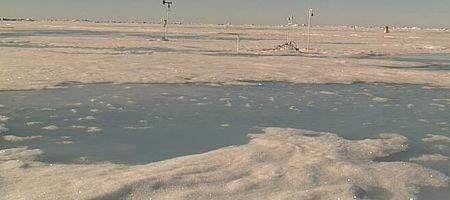If climate change continues, summer sea ice in the Arctic could disappear altogether – but in the meantime Arctic ice could temporarily stabilize or even increase.

A new computer modeling study by scientists at the National Center for Atmospheric Research (NCAR) reinforces the general view that the Arctic sea ice loss seen over recent decades can’t be explained by natural causes alone, and that in 50 or 60 years the ice will disappear during summer.
Unexpectedly, though, the team found that Arctic ice under current climate conditions is as likely to expand as it is to contract for the next decade.
“One of the results that surprised us all was the number of computer simulations that indicated a temporary halt to the loss of the ice,” says NCAR scientist Jennifer Kay.
“The computer simulations suggest that we could see a 10-year period of stable ice or even an increase in the extent of the ice. Even though the observed ice loss has accelerated over the last decade, the fate of sea ice over the next decade depends not only on human activity but also on climate variability that cannot be predicted.”
The team also ran computer simulations to answer why Arctic sea ice melted far more rapidly in the late 20th century than projected by computer models.
They concluded that around half the observed decline was due to human emissions of greenhouse gases, and the other half to climate variability.
“The changing Arctic climate is complicating matters,” says Kay. “We can’t measure natural variability now because, when temperatures warm and the ice thins, the ice variability changes and is not entirely natural.”






